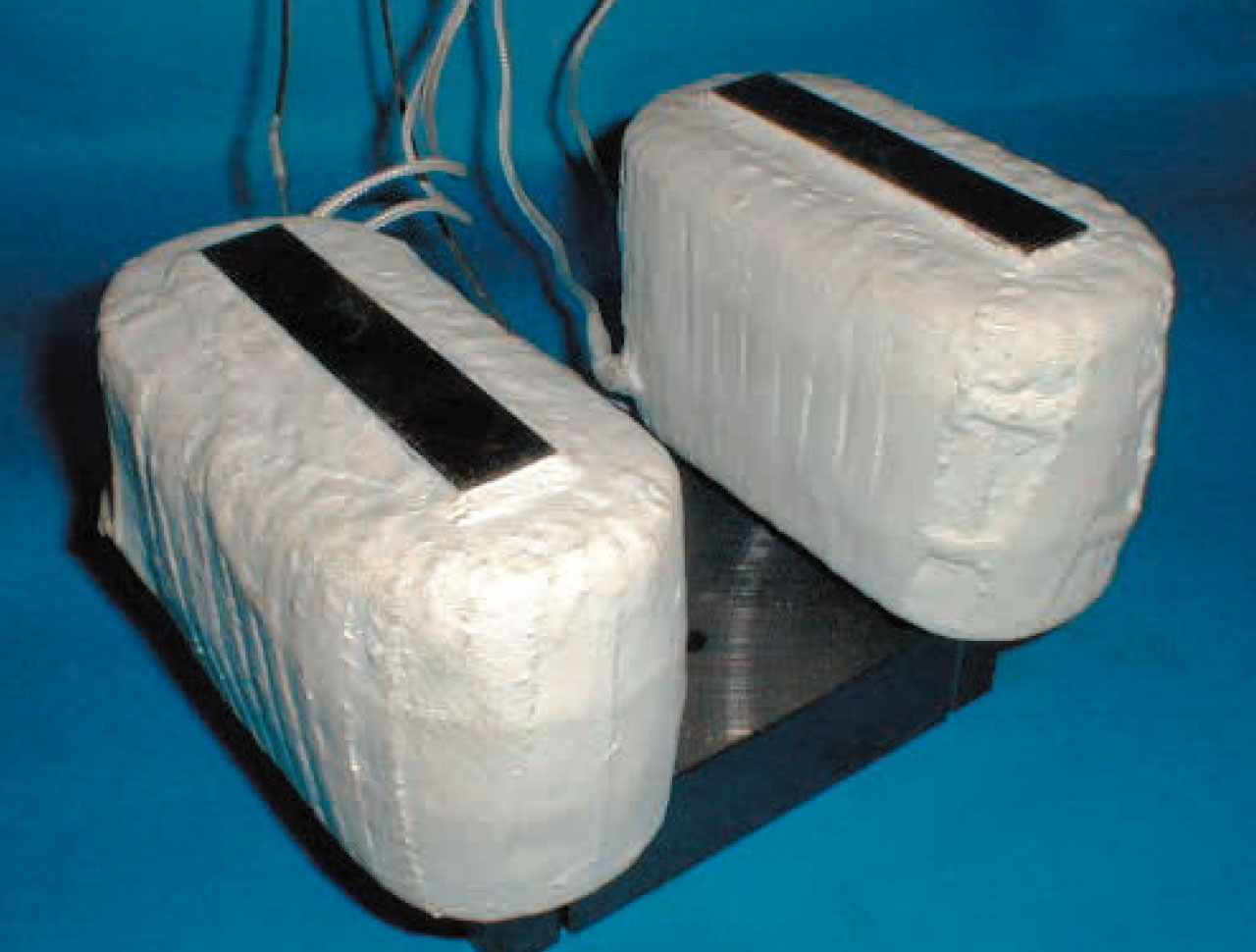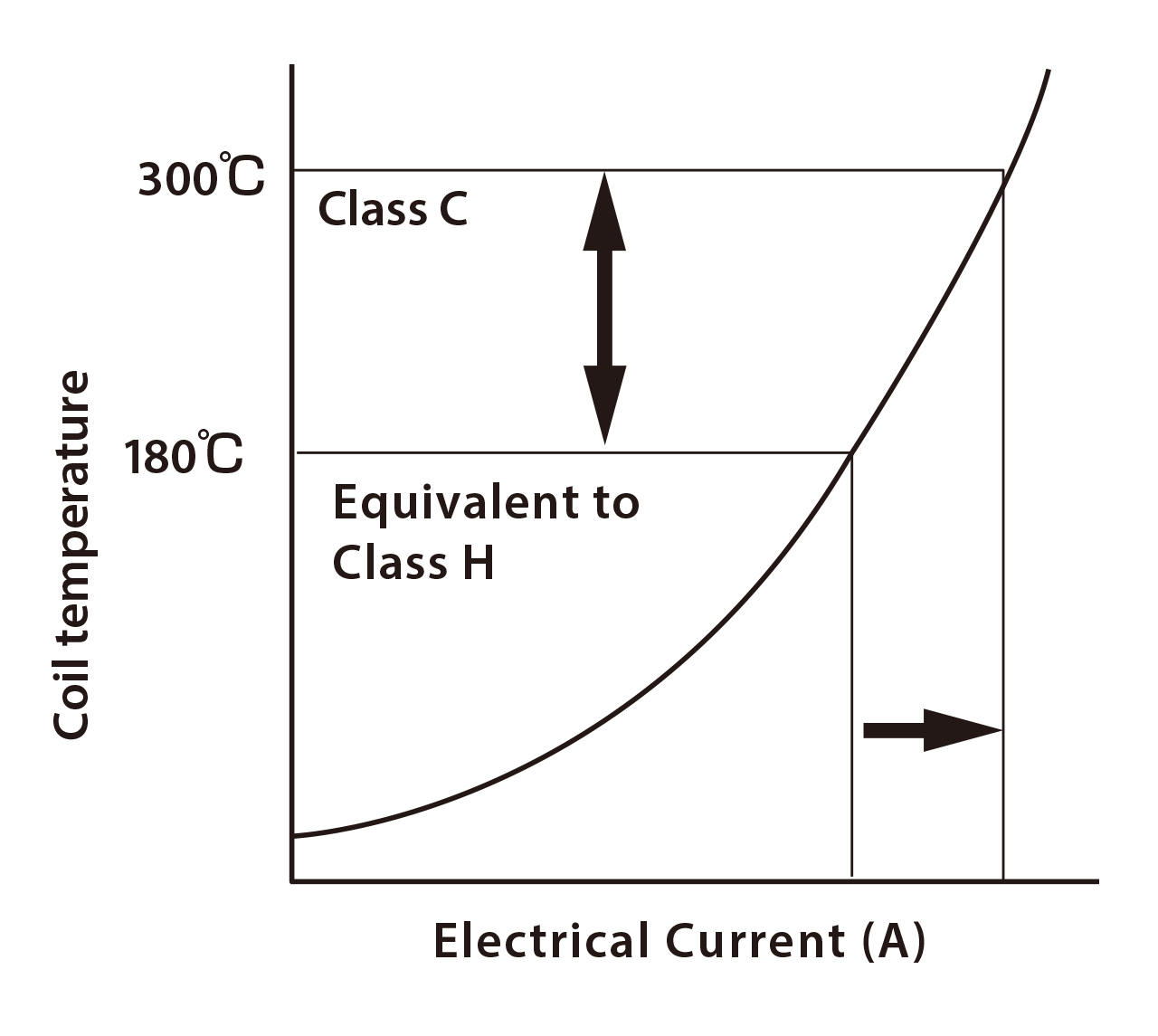Electromagnet for Class C Applications
Electromagnet for Class C Applications
our newly developed Class C Electromagnet Uses Mineral Insulation
SINFONIA TECHNOLOGY CO,. LTD. turned to various types of mineral insulation material and inn ovative construction to successfully develop a Class C electromagnet with heat-resistant properties that are far superior to those of conventional Class H magnets.

- Mineral Insulation Material
Conventional organic insulation (used on Class H magnets) can only withs tand temperatures up to about 200_C. By using inorganic varnish and electri cal wire covered with mineral insulation, our magnet can operate with a coil temperature of up to 300_C. (Class C applications). - Possible to Use Large Currents
Compared with conventional Class H magnets, the Class C magnet can accomm odate a wider range of currents. - Withstands Higher Temperatures
Compared with a conventional Class H magnet with the same performance capa city, the Class C magnet can operate under higher temperatures. - More Compact System
Higher heat resistance means that only air cooling is needed, which improves safety and makes maintenance easier.

Figure 5. Relationship Between Electrical Current and Coil Temperature
Insulation Configuration and Characteristics
| Insulation Configuration | |
|---|---|
| Wire | Ceramic insulated electrical wire |
| Varnish |
ilica insulation varnish |
| Insulation material |
Alumina insulation paper |
| Insulation Characteristics | |
|---|---|
| Insulation resistance | 100xM or greater (at 300xC) |
| High potential test | Passed 1500V (at 300xC) |

